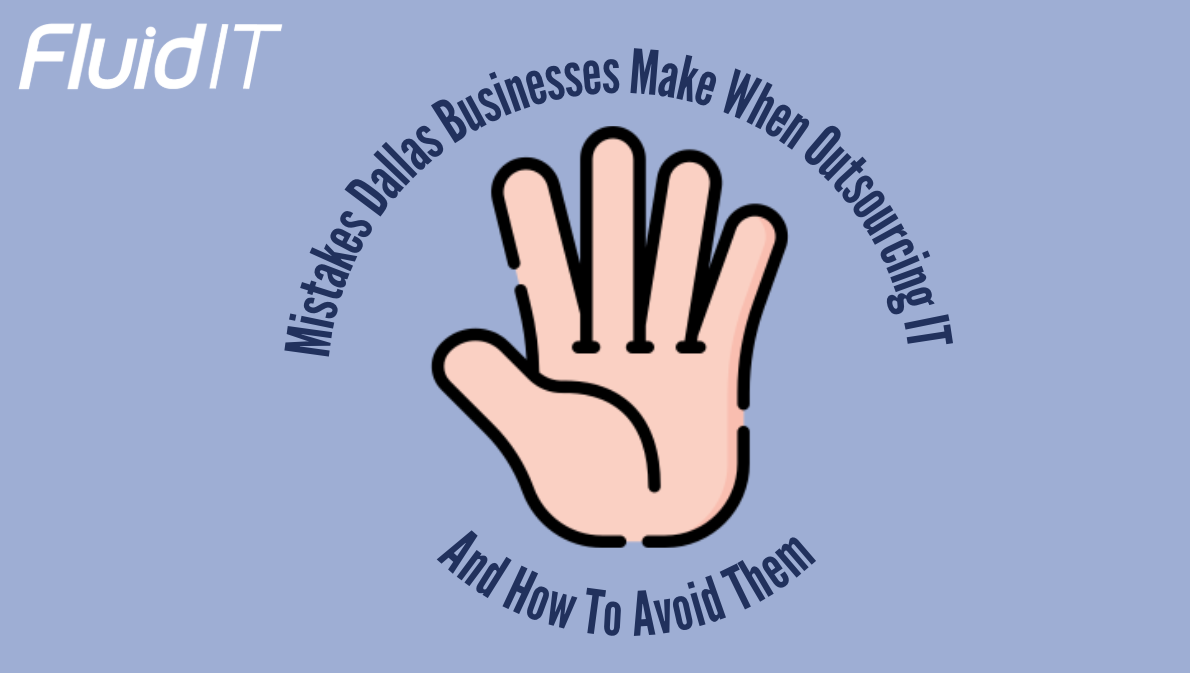Choosing the Right IT Partner: 7 Questions Every Dallas Business Should Ask
Finding the right IT partner is a critical decision for any business in Dallas-Fort Worth. Whether you are a growing startup, an established company,...

As the digital world continues to evolve, so do the roles and responsibilities of IT professionals. One of the most recent trends in IT is the emergence of virtual CIO services.
A Virtual Chief Information Officer (virtual CIO, vCIO), is a highly skilled IT professional who provides strategic advice and guidance on technology decisions. They are responsible for developing and implementing IT strategies that help businesses maximize their technology investments.
In this blog post, we will explore:
A vCIO is a professional who provides strategic IT advice and guidance on technology decisions. They are often hired as an external consultant to help companies assess their current IT strategies, identify areas of improvement, and develop new strategies that maximize their technology investments.
Virtual CIOs have a wide range of technical knowledge, skills, and experience. They have an in-depth understanding of the latest trends and technologies and can provide guidance on the best solutions for any given situation.
The role of the vCIO is unique in that they are not responsible for the day-to-day operations of the IT department. Instead, they focus on helping organizations make informed decisions about their IT investments. This includes assessing the current IT environment, identifying opportunities for improvement, developing long-term IT strategies, and helping organizations stay ahead of the competition.
vCIOs are also responsible for working with other IT professionals to help them stay abreast of the latest trends and technologies. They can offer guidance on the best solutions for any given situation, as well as help organizations plan for future technology needs.
By providing unbiased, expert advice, a vCIO can help organizations make the most of their technology investments.
A current trend is to include vCIO services in all-inclusive managed IT services plans. Referred to as MSPs, these providers seek to offer clients more value via this offering. Although every MSP can say they are sufficiently proficient, it often can feel like a bait-and-switch because a true vCIO requires unique talent, skills, and years of experience that cannot be easily reproduced.
The foundation of any vCIO value proposition is the technology roadmap. The technology roadmap is just that, an actionable plan that defines key initiatives to improve the business over the next 12 to 24 months. It is an ongoing rolling process that enables and forces alignment between the business and technology.
vCIOs offer a wide range of capabilities, including:
IT Planning & Strategy: Developing long-term IT strategies and plans that maximize the value of technology investments.
Technology Evaluation & Selection: Assessing the current IT environment and identifying opportunities for improvement.
Technology Roadmaps & Implementation: Developing technology roadmaps and implementation plans that ensure organizations are using the right solutions for their business needs.
IT Governance & Risk Management: Developing and implementing IT policies and procedures to ensure compliance with industry regulations.
Cost Effectiveness: Analyzing current IT operations and identifying opportunities for cost savings and efficiency improvements.
Technology Audits & Assessments: Assessing IT systems and infrastructure for potential areas of improvement.
Vendor Management: Working with vendors to ensure organizations are getting the best value for their IT investments.
Technology Training & Education: Providing training and education to IT staff to ensure they are current on the latest technologies.
Virtual CIO services offer a number of benefits to organizations, including:
Reduced IT Costs: By helping organizations assess their current IT environment and identify areas of improvement, vCIOs can help reduce IT costs by eliminating unnecessary spending.
Increased Efficiency: They help organizations develop IT strategies and plans that maximize the value of their technology investments, which can help them become more productive and efficient.
Improved IT Governance: They help organizations develop and implement IT policies and procedures that ensure compliance with industry regulations.
Increased ROI: They help organizations make informed decisions about their technology investments, which can result in increased Return on Investment (ROI).
Improved Security: They help organizations develop and implement IT security policies and procedures that protect their data and IT systems from cyber-attacks.
Increased Competitiveness: By helping organizations stay ahead of the competition, they can help organizations remain competitive in today’s ever-changing digital world.
Organizations can leverage vCIO services to help them make informed decisions about their technology investments. Here are some tips on how to leverage vCIO services:
Assess Your Current IT Environment: Before you can leverage these services, you need to assess your current IT environment. This assessment should identify areas of improvement, potential cost savings, and opportunities for increased efficiency.
Develop a Technology Roadmap: Once you have identified potential areas of improvement, you should develop a technology roadmap. This roadmap should include long-term IT strategies and plans that maximize the value of your technology investments.
Identify the Right Solutions: Once you have identified the right solutions for your business, you should work with a vCIO to help you implement them. The vCIO can help you select the right vendors and ensure that the solutions are properly implemented.
Stay Ahead of the Competition: A vCIO can help you stay ahead of the competition by helping you develop IT strategies that are tailored to your specific business needs. They can also help you identify emerging trends and technologies that can give you a competitive edge.
The cost of vCIO services varies depending on the scope of the project. Generally, vCIOs charge an hourly rate for their services. The rate will depend on the complexity of the project and the level of expertise of the CIO. Most vCIOs also offer packages and discounts for long-term projects.
The cost of virtual CIO services can also vary depending on the size of the project. Small projects may cost less than larger projects, as the CIO will be able to dedicate less time to the project.
As previously mentioned, managed services providers (MSP’s) may offer and include vCIO services within their plans. This is an important factor to understand when using an MSP because these services are required to realize the most value from technology and your MSP.
At Fluid IT, we have embedded virtual CIO services within our services for every client relationship and partnership. Not doing so would greatly reduce the value to our clients.
Working with a vCIO can be a great way to maximize the value of your technology investments. Here are some strategies for working with a vCIO:
Surprisingly, when asking business owners and management to document and provide the top 3 to 5 business objectives for the next twelve months, typically there is no answer or different answers from each executive. A primary requirement in working with a vCIO, is to first establish and agree on clear business goals and objectives for the next year.
A skilled and experienced vCIO will work with the management team to define clear objectives, which are a foundational requirement and prerequisite to creating a technology roadmap. The technology roadmap is the tool to ensure all initiatives align and tie back to the business objectives.
It is important to establish a clear plan for communication between the management team and the vCIO. This should include addressing who is on the technology steering committee for making key decisions and who the primary contact is for ongoing communication?
What is the cadence for recurring communication? Will there be a formal in person meeting each quarter and a video call once a month, or is a less formal approach acceptable? Typically, the size and current state of IT (i.e., whether it’s in great shape or on the verge of breaking) will determine the initial cadence that can change over time as the organization improves.
Be sure to set clear expectations with the vCIO. This will help ensure that the CIO is able to deliver on time and within budget.
A communication plan helps to ensure that all parties are on the same page and that the CIO can provide the best advice and guidance.
vCIO services can be a great way to maximize the value of technology investments, and some would argue they are required in order to obtain maximum value from technology.
Whether you are looking for help developing long-term IT strategies, assessing your current IT environment, or implementing new solutions, a vCIO can help. By leveraging the expertise of a vCIO, organizations can save money, increase efficiency, and stay ahead of the competition.
The demand for these services is needed now more than ever. With the impact of the pandemic, global instability, and economic uncertainty, it is critical organizations make the right technology investments, at the right time, every time. A vCIO is critical to that end.
Fluid IT has vCIOs with over 30 years of experience in Dallas and nationally. They provide advisory services and guidance to small and medium-sized businesses and Fortune 500 enterprises. The vCIO concept, methodology, and process are part of our DNA and embedded in everything we do at Fluid IT.
Contact us today to discover how Fluid IT's Virtual CIO services can help your company on the road to success.

Finding the right IT partner is a critical decision for any business in Dallas-Fort Worth. Whether you are a growing startup, an established company,...

As your business expands, technology becomes both a powerful driver and a potential bottleneck. Many Dallas companies start with in-house or ad-hoc...

Outsourcing IT services can be a smart strategy for Dallas-Fort Worth businesses looking to optimize efficiency, reduce costs, and access specialized...